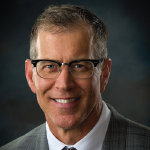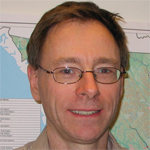
all_about_people / shutterstock.com
More than two decades ago, Charles King, MD, was completing his final year of residency in internal medicine, fairly confident he was headed for a career in gastroenterology. Then he took a rotation in rheumatology. The rest, as they say, is history.
“It’s a complicated field, and it requires a balance of left brained-ness and a great deal of art,” says Dr. King, a rheumatologist in Tupelo, Miss., explaining rheumatology’s appeal. “It also involves a lot of human nurturing because you have patients for 20, 30, 40 years.”
When Dr. King was young, his mother would bring him on Sundays to the nursing home where she worked. He developed a fondness for the elderly, and in his residency, he realized working with the elderly was among the privileges afforded rheumatology providers.
On top of that, “it involved knowing things few other doctors know,” he says. “Rheumatologists tend to be the geeks in the room.”
These were, however, also aspects of rheumatology that made Dr. King reluctant at first to incorporate advanced practice clinicians (APCs) into his high-volume practice.
“I didn’t think they could do what I do,” he says. “But then I reread the book Who Moved My Cheese, by Spencer Johnson, about embracing change, and I knew I had to add an advanced practice clinician into my practice.”
‘I see between 50 & 55 patients a day myself.’ —Dr. King
Bursting at the Seams
Dr. King is, by his accounting, part of one of the largest rheumatology practices in the country. In the past three years, he says, he has seen 5,600 unique patients: “I get asked frequently about how to construct a high-volume, high-efficiency practice.”
Tupelo, he explains, is an unusual healthcare market. It is rural, but serves a community of 40,000 people, drawing from a region with a population of more than 300,000. His practice, part of a large hospital with 650 beds, draws patients from southern Tennessee, eastern Arkansas, western Alabama and all of Mississippi. And, he says, there are only three board-certified rheumatologists in northern Mississippi. Recruiting new physicians has remained a challenge in his decades of practicing there.

Dr. King
“Eight years ago, I reached the point with my practice that I had to stop seeing new patients. My schedule was literally full, and I couldn’t see anyone else,” he explains. “It created angst in the community because physicians would refer patients, [but] I was unable see them.”



